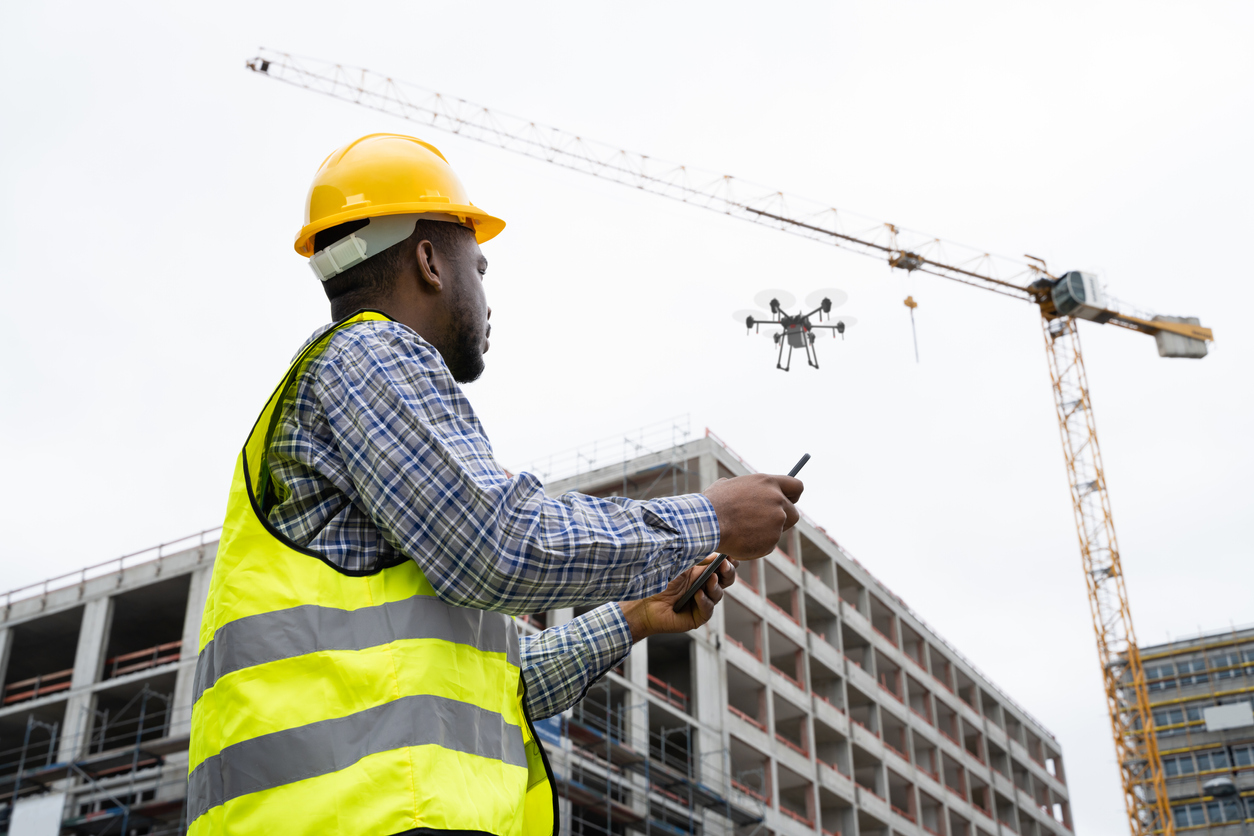For Media Inquiries
Contact Revee White, Director of Marketing and Communications at rwhite1@mem-ins.com or 573.499.4190.
Drones are at the forefront of the new technology frontier. These high-flying machines range from the size of a small airplane to pocket-size. Available for non-military use for more than 15 years, they are used to take photos and videos, map geography, and more. Many people don’t understand just how much drones are capable of. What do employers need to know about drones? How can they be used to increase safety on the job?
On this episode of the WorkSAFE Podcast, we talk with David Daly, a military veteran and an award-winning writer and photographer. He is also a drone pilot certified by the Federal Aviation Administration (FAA). Daly is also a partial owner of Altitude University, an online school for people interested in earning their drone piloting license.
First, we’ll share what a drone, or unmanned aerial vehicle, is. Then, we’ll talk about how drones are stepping into situations that would be unsafe for employees. Finally, we’ll discuss how employers can use drones to their advantage.
Listen to this interview on the WorkSAFE Podcast, or read the show notes below.
Drones: The inside scoop on unmanned aerial vehicles
A drone is an unmanned aerial vehicle (UAV) where a pilot or passengers aren’t on board. They come in a variety of shapes and sizes. Most people have seen a drone before. Parents can purchase small drones as gifts for their kids. Hobbyists can invest in bigger and better models as they hone their talents. Professionals can use drones as part of their line of work.
Daly was drawn to drones after several tours in the Middle East. Struggling with PTSD and searching for something to occupy his mind, he tried drone flying. “After a short time, I realized that while I was flying my drone, I wasn’t focusing on the issues that I was having with regard to my combat time,” he shared. “So it became an activity that I got more and more involved with.” His experience evolved from a hobby into a business. Eventually, he became an industry analyst in the drone community.
Common uses for drones
Drones have an ever-expanding list of applications in today’s world. “Really, in the last fifteen years or so, you’ve seen the evolution from, you know, essentially a toy or a little hobby item into a really great tool for industrial applications,” he explained. “There are so many different sectors of the economy that are touched by UAV technology.” In industry settings, drones are often used for:
- Inspections. Drones can be used to inspect equipment challenging to access. For example, solar panels located on top of a building or wind turbines.
- Mapping and surveying. Viewing large areas of land can be difficult on foot. Drones are flown from above to understand the condition and layout of property.
- Photography. Real estate companies make the most of drones to show potential buyers upcoming neighborhoods. They are even used within available homes to help viewers understand the home’s blueprint.
Using drones in the safety sector
Today, drones are stepping in to save employers money, time, and unnecessary risk. “It’s much less expensive to have a drone than to have a person that needs medical insurance and a 401(k) and a salary,” Daly said.
Using drones might give some the impression that the machines are replacing employees. However, they can complete tasks that would ordinarily put a person in harm’s way. For example, drones can enter environments with extreme temperatures or are toxic. Some industry leaders are beginning to ask important questions. Why send an employee to do a hazardous job when a drone could perform it? A drone is replaceable. Human life is not.
Introducing indoor use
Drones are often thought of outside: flying through blue skies, dense forests, or open water. But innovation has allowed them to operate well indoors. More recent models have obstacle avoidance sensors to avoid bumping into things. Others have lasers that draw a map, becoming more familiar with a space over time. This lets the drone know where everyday stationary objects are, like ceiling fans and overhead lights. At night, some models patrol warehouse spaces, acting as full-time security.
How business owners can use drones to their advantage
For Daly, business owners must ask themselves an essential question: Why aren’t they using drones? “You know, as people, we put ourselves in a lot of harmful areas when we’re doing the work that we’re doing,” he pointed out. He encourages interested employers to visit the FAA’s Drone Zone. Another resource is the Association for Uncrewed Vehicle Systems International. Daly finds that their blog posts helpful developments in the industry.
Receiving a certification
Altitude University provides training courses, including the ones prospective pilots need to be licensed. A benefit of drone certification is the ease of receiving it. “You know, the exam is very straightforward, and really, it’s dependent on how much time you want to put into it,” he shared. More than 17,000 students have gone through the program with a 99% success rate.
“The average person, if they do about an hour or two of studying a day, can probably get ready for the exam in about two weeks,” he added. “If you really wanted to be dedicated to it and devoted an entire weekend to studying the material, you could probably be ready to pass the exam.” Daly highlights that the FAA hasn’t designed the exam to fail people. Rather, it’s designed to ensure people know how to operate drones safely.
Learning the limitations
There are more drones registered with the FAA than ever before. With the freedom to fly comes boundaries about where to go. Not only do pilots share the skies with larger manned aircraft, but wildlife and essential communication systems. Airspace approval is required in many commercial cases. It allows the FAA to know when and where people are flying drones.
Further, it helps protect privacy. The first thought many people have when seeing a drone in their area for the first time is that it might be watching them. But Daly finds that showing his license and sharing his business card eliminates most concerns. People want to know that you have permission to fly and that you know what you’re doing. “Transparency is the key to eliminating that as a concern.”
Get Started
With so many models on the market, buying the first one or the cheapest option can be tempting. Daly advises business owners to do their research before getting a drone. What do you plan to use it for? What functions do you need it to have? Talking to a professional before making a purchase is even more helpful.
Hiring someone is an option for those who want to benefit from drone use without buying one. There are stiff penalties for using drones for business applications without a license. Daly advises employers only to hire someone with a license, even if their rate is a little more.
Drones are part of the future. Investing in one could help take your business to new heights – and increase the safety of your employees.


